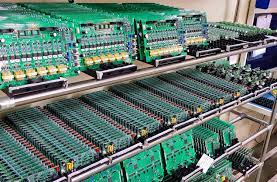LAB analysis Medical PCB Assembly – PCBA manufacturer
Name: LAB analysis Medical PCB Assembly – PCBA manufacturer
Origin: China
Certified: UL, CE, RoSH
Copper Thickness: 4 oz
Surface Finishing: HASL ,OSP ,ENIG, Immersion Gold …
Layer Counts: 1–20L
Board Thickness: 0.4mm–3.2mm
Processes for Medical PCB Assembly Using LAB Analysis:
Medical PCB (Printed Circuit Board) assembly process optimization using laboratory analysis (LAB) may improve the effectiveness and dependability of medical equipment. PCB assembly plays a crucial role in medical electronics, where accuracy and precision are essential for patient safety and device performance. LAB analysis Medical PCB Assembly provides useful information and resources to simplify and enhance these procedures.
- LAB analysis thoroughly assesses several PCB assembly-related parameters, including soldering methods, component positioning, heat control, and quality assurance. Engineers may analyze the assembly process at a microscopic level to spot possible problems and improve the workflow using cutting-edge laboratory tools and methods.
- Soldering procedures are a significant area where LAB analysis is useful. Engineers can inspect solder junctions using high magnification during LAB analysis to evaluate their quality, spot any flaws or deficiencies, and pinpoint the underlying reasons. With the help of this knowledge, it is possible to optimize the process and raise the quality and dependability of joints by changing the soldering settings, improving the stencil design, or using other soldering techniques.
- Additionally, LAB analysis helps with PCB location optimization for components. Engineers can spot problems like misalignment or tombstoning (when one end of a component lifts off the PCB surface during soldering) by inspecting the precision and alignment of component soldering. This investigation improves component adhesion techniques, accurate component placement, and pick-and-place machines for superior electrical connection.
Important components of LAB analysis Medical PCB Assembly:
- Another crucial component of medical PCB assembly is thermal management. Using LAB analysis, engineers may assess heat dissipation, thermal profiles, and possible hotspots on the PCB. Using thermal imaging and analysis, they can locate locations vulnerable to overheating or insufficient cooling. To avoid thermal problems and improve device reliability, this information helps design and implement efficient thermal management solutions, such as heat sinks or optimized PCB layouts.
- Finally, LAB analysis is essential for quality assurance during PCB assembly. Engineers can spot flaws or irregularities that could jeopardize the performance or durability of a device by checking solder joints, confirming component placement correctness, and performing different tests. LAB analysis makes it possible to put strict quality control methods in place, which lowers the possibility of defective items making it to market.
Uses for laboratory analysis Assembly of medical PCB:
LAB analysis Medical PCB Assembly is a method used in medical PCB (Printed Circuit Board) assembly to assess the functioning and performance of electronic devices used in medical applications. The following are a few uses for LAB analysis in medical PCB assembly:
-
Medical Imaging Systems:
PCBs used in medical imaging systems, including X-ray machines, CT scanners, MRI scanners, ultrasound devices, and nuclear medicine equipment, are tested and validated using LAB analysis. It ensures that the electrical parts and circuits in charge of image capture, processing, and display adhere to the specifications and deliver precise, excellent medical pictures.
-
Patient Monitoring Systems:
LAB analysis aids in evaluating PCB performance in patient monitoring systems such as ECG (Electrocardiography) monitors, pulse oximeters, blood pressure monitors, and vital signs monitors. Ensuring the safe and efficient monitoring of patients, confirms the precision and dependability of the electronic circuits used to measure and interpret patient data.
-
Laboratory and Diagnostic Equipment:
The performance of PCBs used in laboratory and diagnostic equipment, such as DNA sequencers, PCR machines, blood analyzers, and tissue analyzers, is assessed through LAB analysis. It aids in assessing the electrical circuits used in sample processing, analysis, and data interpretation for accuracy, precision, and repeatability.






